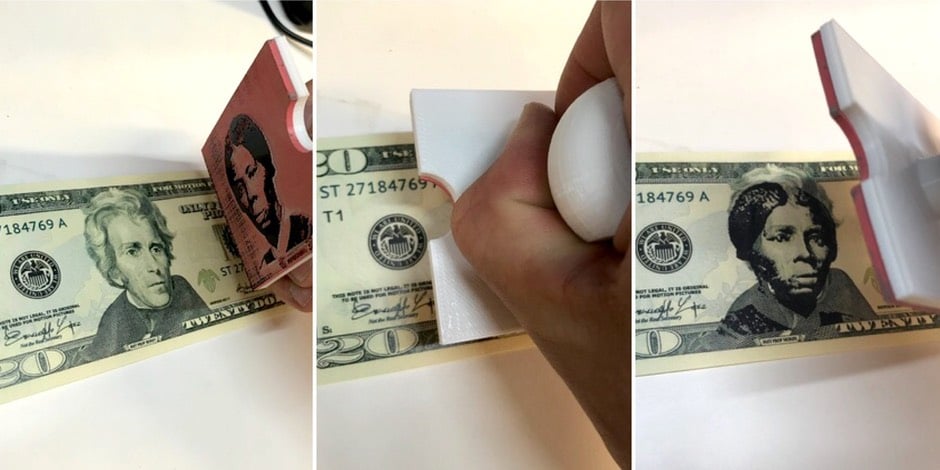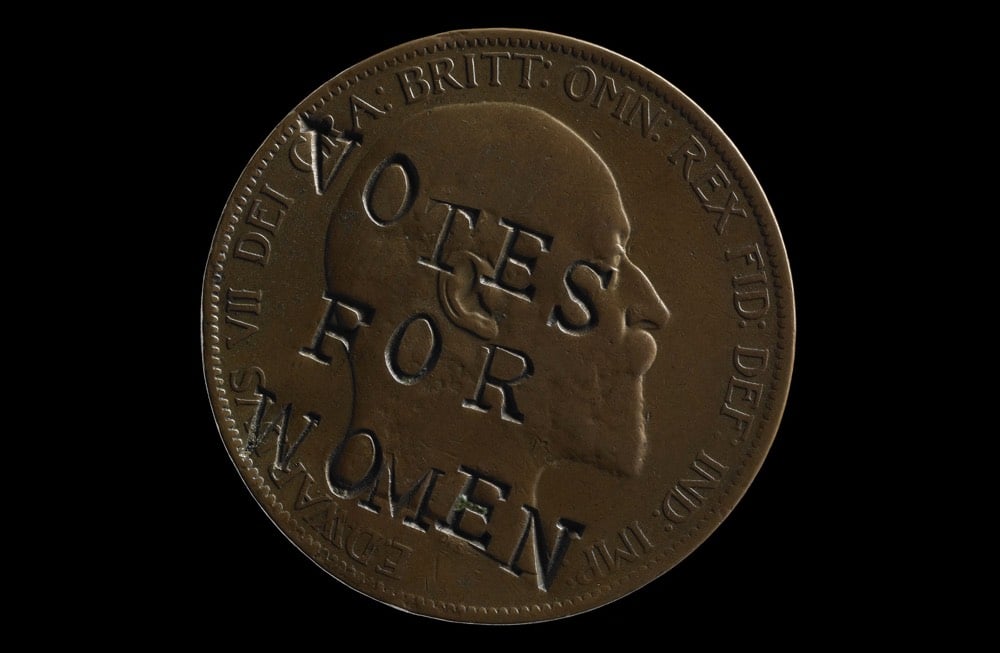The Harriet Tubman $20 Stamp
Frustrated that the US Treasury Department is walking back plans to replace Andrew Jackson on the front of the $20 bill with Harriet Tubman, Dano Wall created a 3D-printed stamp that can be used to transform Jacksons into Tubmans on the twenties in your pocketbook.

Here’s a video of the stamp in action. Wall told The Awesome Foundation a little bit about the genesis of the project:
I was inspired by the news that Harriet Tubman would replace Andrew Jackson on the $20 bill, and subsequently saddened by the news that the Trump administration was walking back that plan. So I created a stamp to convert Jacksons into Tubmans myself. I have been stamping $20 bills and entering them into circulation for the last year, and gifting stamps to friends to do the same.
If you have access to a 3D printer (perhaps at your local library or you can also use a online 3D printing service), you can download the print files at Thingiverse and make your own stamp for use at home.
Wall also posted a link to some neat prior art: suffragettes in Britain modifying coins with a “VOTES FOR WOMEN” slogan in the early 20th century.

Update: Several men on Twitter are helpfully pointing out that, in their inexpert legal opinion, defacing bills in this way is illegal. Here’s what the law says (emphasis mine):
Defacement of currency is a violation of Title 18, Section 333 of the United States Code. Under this provision, currency defacement is generally defined as follows: Whoever mutilates, cuts, disfigures, perforates, unites or cements together, or does any other thing to any bank bill, draft, note, or other evidence of debt issued by any national banking association, Federal Reserve Bank, or Federal Reserve System, with intent to render such item(s) unfit to be reissued, shall be fined under this title or imprisoned not more than six months, or both.
The “with intent” bit is important, I think. The FAQ for a similar project has a good summary of the issues involved.
But we are putting political messages on the bills, not commercial advertisements. Because we all want these bills to stay in circulation and we’re stamping to send a message about an issue that’s important to us, it’s legal!
I’m not a lawyer, but as long as your intent isn’t to render these bills “unfit to be reissued”, you’re in the clear. Besides, if civil disobedience doesn’t stray into the gray areas of the law, is it really disobedience? (via @patrick_reames)
Update: Adafruit did an extensive investigation into the legality of this project. Their conclusion? “The production of the instructional video and the stamping of currency are both well within the law.”





Stay Connected